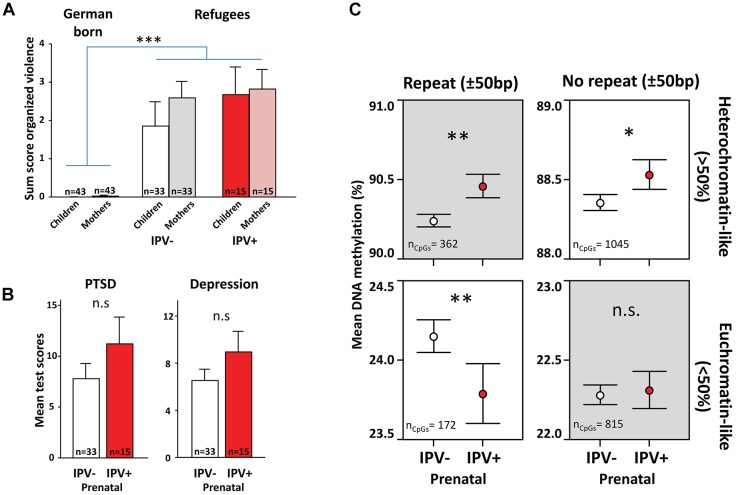FIGURE 3.
A methylome switch in prenatally stressed war-exposed refugees. Graphs show results from an independent study in refugees primarily born in countries of the Middle East which migrated to Germany between 2010 and 2016. (A) Refugee mothers and children had higher life-time exposure to violence than reference groups born in Germany. Community violence scores used for the São Gonçalo samples was not available here. Instead graphs indicate organized violence scored using the Event Checklist for War, Detention, and Torture Experiences, as described in Onyut et al. (2009). (B) Using the same methods for scoring symptoms of PTSD and depression as were used for the São Gonçalo samples, refugee children that experienced prenatal IPV (IPV+) did not show more symptoms of PTSD and depression compared to controls (IPV–). (C) Just like the São Gonçalo children, refugee children that experienced prenatal IPV had more DNA methylation in heterochromatin-like repetitive regions than controls, accompanied with what appeared to be a rebound in euchromatin-like repetitive regions. Analysis was done on CpGs in common post filter between refugees and São Gonçalo cohorts (n = 239,442). General linear models were used with age, sex and prenatal exposure to trauma and organized violence as covariates. ∗∗∗p < 0.001, ∗∗p < 0.01, ∗p < 0.05.

